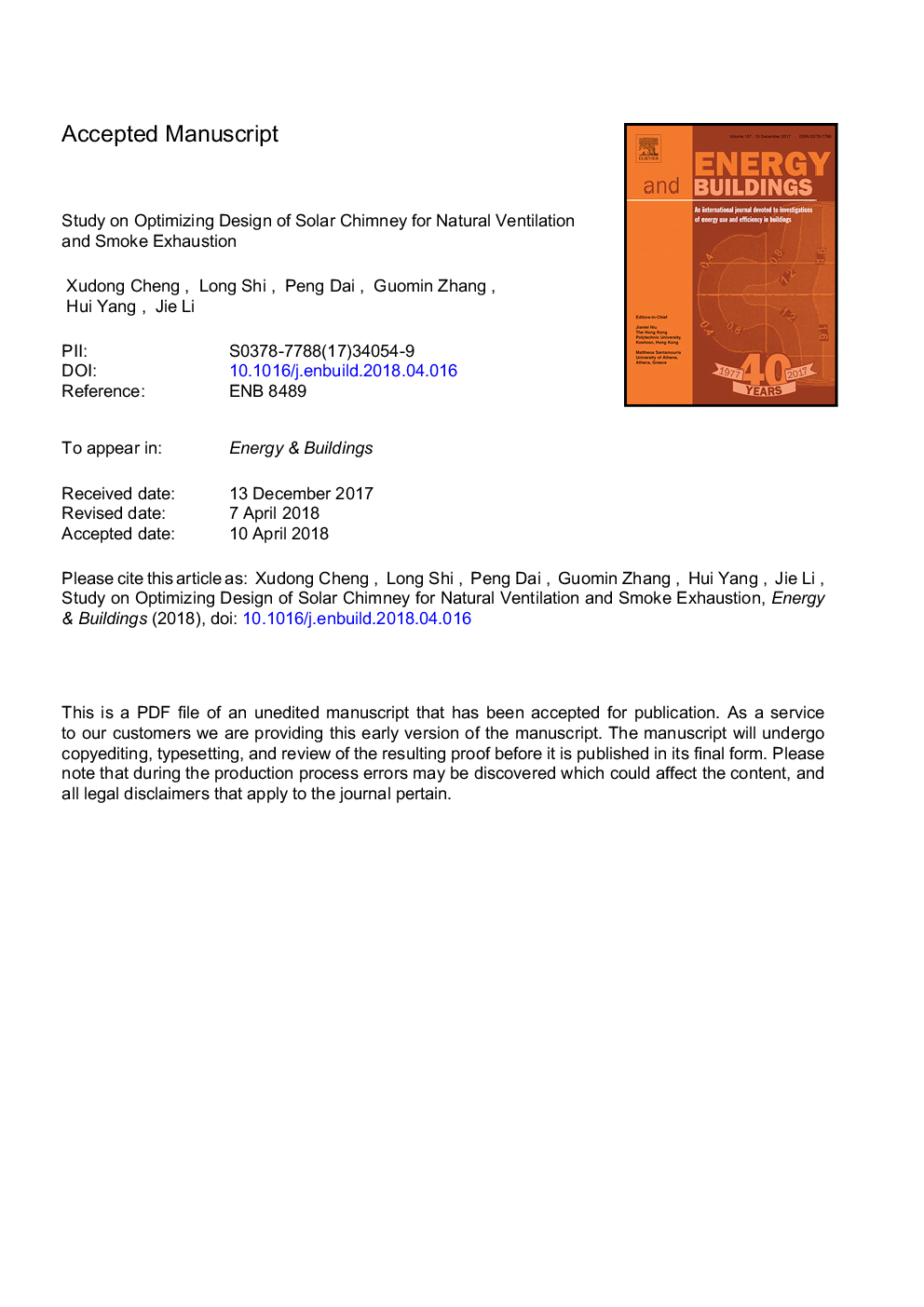| Article ID | Journal | Published Year | Pages | File Type |
|---|---|---|---|---|
| 6727857 | Energy and Buildings | 2018 | 43 Pages |
Abstract
Solar chimney has been primarily utilized for natural ventilation, but its application to smoke exhaustion was rarely explored. A 1:3 reduced-scale test platform with a dimension of 1.5â¯mâ¯Ãâ¯1.5â¯mâ¯Ãâ¯0.9â¯m (height) was used to optimize solar chimney under natural ventilation and smoke exhaustion, considering four influencing factors, including height of cavity inlet from the floor (0.2-0.8â¯m), cavity depth (2.5-17.5â¯cm), solar radiation (400-1200â¯W/m2) and fire size (6.8-15.8â¯kW). Both natural ventilation and smoke exhaustion follow the same trend along the air inlet height and cavity depth, which confirms its viability on smoke exhaustion under fire condition without compromising the performance of natural ventilation. Experimental results suggested a chimney configuration of 0.5â¯m high air inlet and 12.5â¯cm cavity depth with optimized functions. External radiation shows obvious benefit on enhancing natural ventilation, while its influence on smoke exhaustion is limited. An empirical model was developed to predict the flow rate under normal and fire conditions. The outcomes of this study provide a technical guidance for the design of solar chimney under scenarios of both natural ventilation and smoke exhaustion.
Related Topics
Physical Sciences and Engineering
Energy
Renewable Energy, Sustainability and the Environment
Authors
Xudong Cheng, Long Shi, Peng Dai, Guomin Zhang, Hui Yang, Jie Li,
